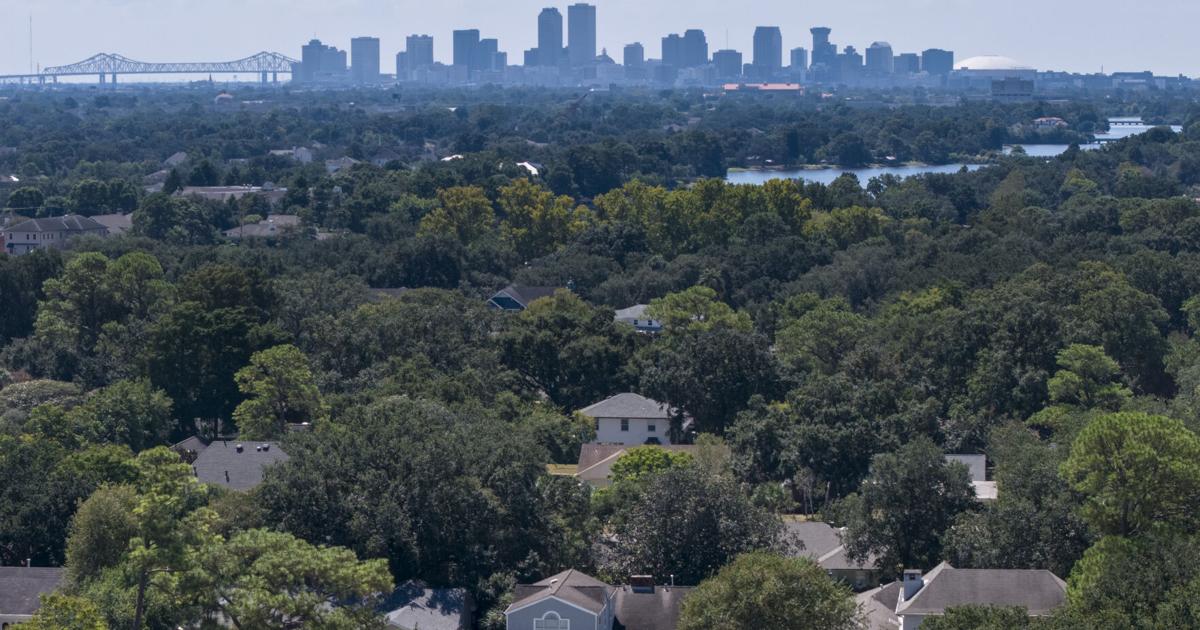
Louisiana summers are not only getting hotter. They’re also getting longer.
Temperatures of 90 F are lasting as much as three weeks longer in cities across Louisiana, according to data from the nonprofit Climate Central. It’s the latest example of how Louisiana summers are growing increasingly hot and dangerous, posing deadly health risks and raising electric bills to unaffordable levels for America’s poorest state.
Baton Rouge is seeing the most additional days with summer temperatures in the state, as the city’s summers have gotten 21 days longer between 1970 and 2024, according to the report. Lafayette is seeing 17 extra summer days and New Orleans is experiencing 11 more days of hot temperatures each year.
“Research shows and tells us if heat trapping pollution keeps rising, summer temperatures will keep stretching later and later,” said Shel Winkley, a weather and climate engagement specialist at Climate Central and a former meteorologist for the College Station, Texas CBS affiliate. “And that heat matters … for kids and outdoor workers when it comes to health risks. We have increased energy demand for air conditioning.”
The rising temperatures are largely the result of decades of greenhouse gas emissions, which Louisiana’s oil and petrochemical sectors have contributed an outsized share, according to climate scientists and reports by the state. Louisiana makes up about 1.4% of the U.S. population but around 4.1% of its greenhouse gas emissions, according to the most recent state inventory.
That report, from 2021, found overall greenhouse gas emissions were slightly declining in Louisiana. The state developed a climate action plan to reduce emissions under Gov. John Bel Edwards, though the fate of the effort to reduce emissions has become less clear amid President Donald Trump’s rollback of climate action and Gov. Jeff Landry’s election to the state’s highest office.
And, paradoxically, recent cuts in air pollution are likely making it even hotter. Particles that polluters released, known as aerosols, masked some of the effects of climate change for years by reflecting sunlight. In other words, the release of these aerosols into the atmosphere have cooled the planet over the past century, and recent regulations tamping down on them have reversed that trend.
In Louisiana, heat-related deaths have soared. The quiet disaster is ‘going to get worse.’
In Louisiana, the consequences of rising heat are stark.
Residents, often elderly, are dying in their homes without adequate AC, outside mowing the lawn or under overpasses in a city where ubiquitous concrete creates a heat island effect that makes New Orleans sweltering. A report by the Environmental Protection Agency found heat waves are getting longer in New Orleans than any city in the nation. And the city’s tree canopy is struggling to cool it down amid hurricanes, damaging construction and ambivalence among residents.
“Things are getting worse,” said Barry Keim, director of the environmental health, climate and sustainability program at LSU Health Sciences Center New Orleans. “It’s likely to continue to get worse.”
Emissions bring heat
The primary cause of hotter and longer summers is greenhouse gas emissions, which have raised global temperatures by more than 1 degree Celsius, according to the most recent report of the Intergovernmental Panel on Climate Change. These gases trap heat in the atmosphere, warming the globe and causing more intense hurricanes, rainfall, drought, wildfires and more.
“Decreasing carbon emissions is paramount to minimizing the severity of global climate change, and its impact on Louisiana residents,” according to a hazard mitigation plan released last year by the Governor’s Office of Homeland Security and Emergency Preparedness.
The plan notes that temperature increases depend, in large part, on how much humans continue to release emissions. Under a high emissions scenario, “historically unprecedented warming” is projected for Louisiana by the end of the century, the report says.
As refineries, coal plants and a host of other industrial processes caused an explosion of greenhouse gases over the past century, they produced a curious, unintended consequence.
Pollution paradox
Many of the particles polluters released, aerosols, lingered in the atmosphere and reflected sunlight away from the earth. In some cases, the aerosols absorbed it.
This had a paradoxical effect on global temperatures. While the greenhouse gases caused temperatures to rise, the aerosols that came from them also masked that effect, a growing body of research suggests. That made temperatures cooler, a phenomenon known as “global dimming.”
Greeta Persad, assistant professor at the Department of Earth and Planetary Sciences at the University of Texas, said the particles counteracted about one third to one half of all warming from greenhouse gases during the industrial era.
Without those pollutants, temperatures could have increased by up to 50%, Persad said.
In recent decades, improved air quality laws have led to a dramatic decline in some of the pollutants that mask the effects of climate change.
It’s “very well established that we’re seeing warming because of this,” Persad said.
Health experts widely agree that regulating air quality and removing pollutants is well worth the tradeoff, noting that improving air quality strengthens health outcomes and saves lives for people near emitters.
“We know these aerosol pollutants are detrimental to public health,” Persad said. “They cause millions of deaths each year.”
Still, the dynamic is raising the prospect that climate change will accelerate in the coming decades, even as governments around the world work to reduce emissions.
“That’s a huge lurking beast in how rapidly these climate risks are going to accelerate going forward,” Persad said.